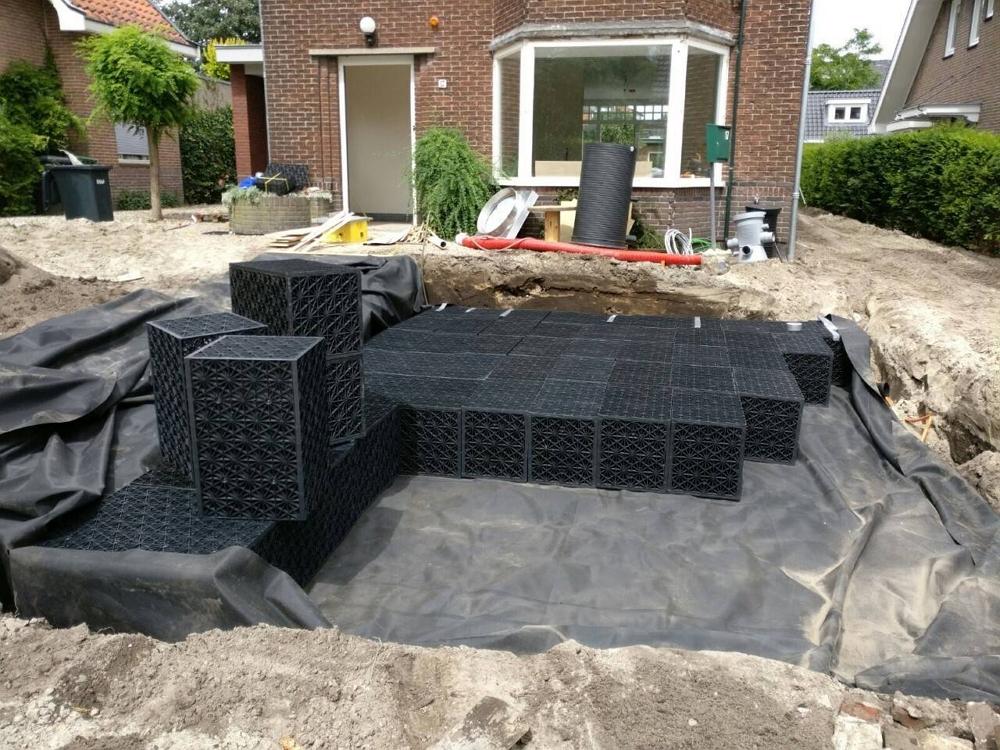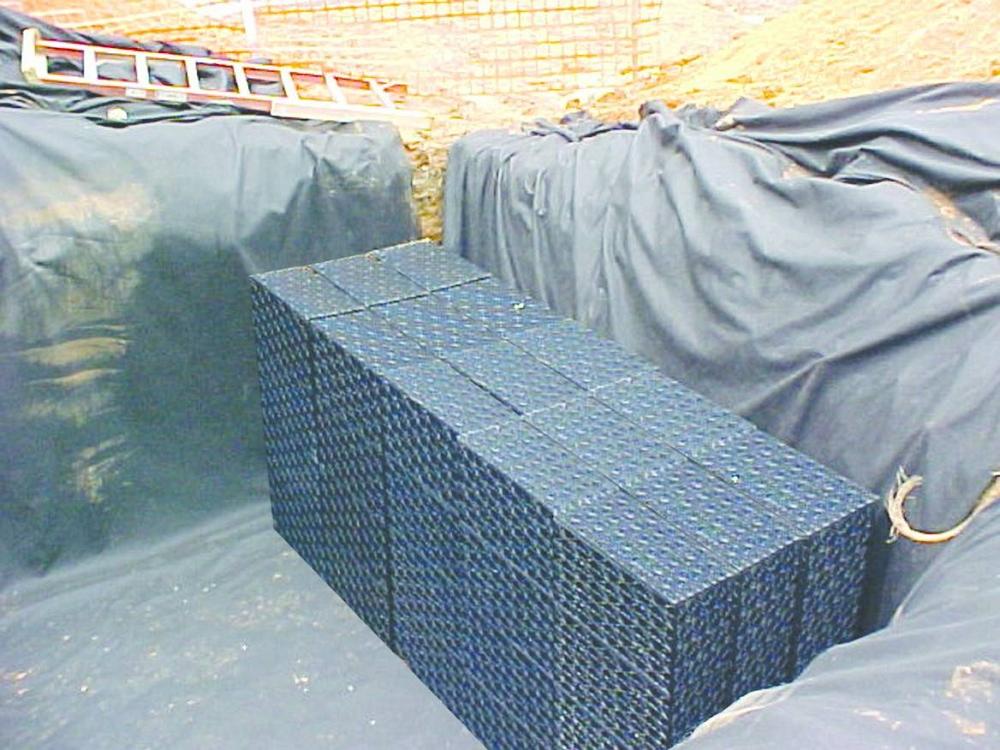Infiltration crates
An infiltration crate is an underground hollow space to store water. The water can then be slowly absorbed into the soil. A geotextile cloth is placed around the crate to prevent dirt from accumulating. In this way you prevent silting up of the crates. Each crate can hold 250 to 300 liters of water.
Cost
A basic set of infiltration crates costs about €450 and for each additional crate you pay about €175.
Space use
An infiltration crate is made to maximize hollow space. Also, the crate has a lot of carrying capacity. The crates can take up a lot of space. However, you do have the advantage that you can build a patio or lawn on top of the crate. This makes the space multifunctional.
Difficulty
Easy to construct yourself. Do consider venting and sand traps.
Earthmoving
The crates should be about 25 to 50 cm below the ground. The crates are usually 40 cm high. A lot of earth moving is required. The soil you no longer need can be disposed of.
Maintenance
Keep only sand trap and leaf trap clean.
Climate Goals
Store water and provide natural groundwater recharge.
Biodiversity
Contribution to improving biodiversity
Points of interest
- If the top layer of the soil consists mainly of clay and loam, this measure is not useful. The water cannot then sink into the soil quickly.
- Allow for at least 25 cm of coverage. For heavy loads, such as crates under a driveway, maintain approximately 50 cm of coverage.
- Place the crate about half a meter above the average groundwater level.
- Do not use a root cloth, but a geotextile cloth.
- Use a leaf and sand trap to prevent siltation. A leaf trap can also serve as an overflow in extreme cases.
- Stay about 2 to 3 meters away from the foundation and trees.
- Place the vent and overflow pipe in a lower part of the garden. During peak downpours, rainwater that no longer fits into the infiltration crate can be collected at that location.
- Check the vent. The downspout sometimes also functions as a sewer vent. If necessary, install an alternative vent.

